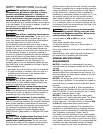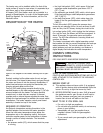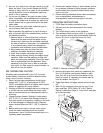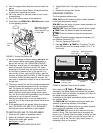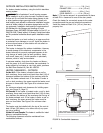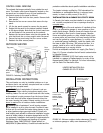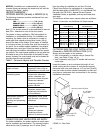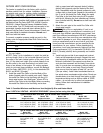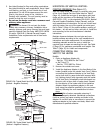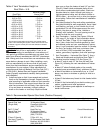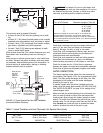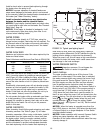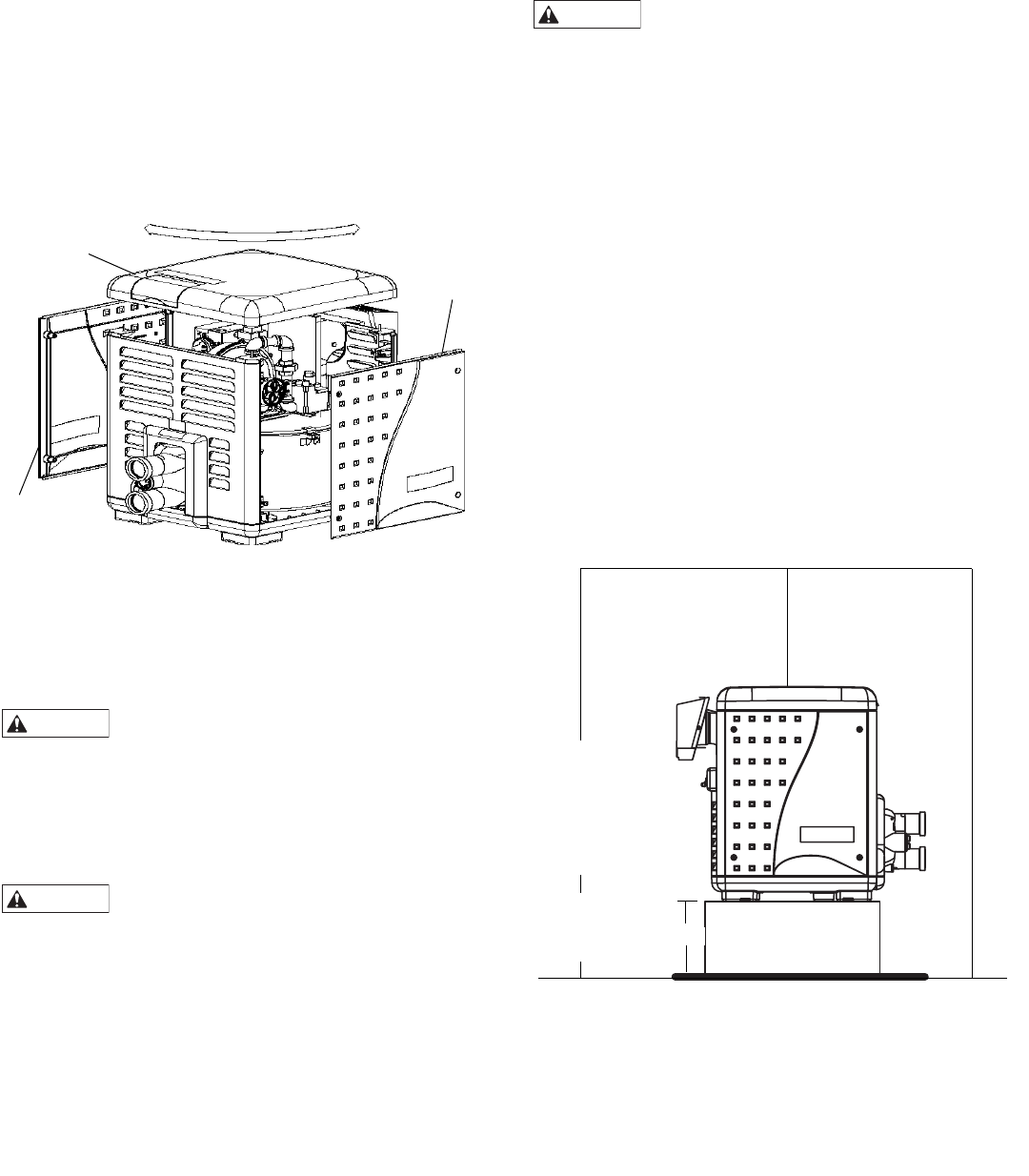
CONTROL PANEL INDEXING
The exhaust discharges vertically from outside the vent
cover. The heater control panel assembly located on the
top panel can be rotated to any of three positions for
convenient access to the panel as follows:
1. Remove the bolts from the door panels. Remove both
door panels.
2. Remove the four corner screws that secure the top
panel.
3. Lift the top panel upward to remove the top panel.
4. Rotate the top panel to the desired position located
at 90 degree angles. Note that the control board can-
not be located on the same side as the exhaust.
5. Replace the top panel down onto the side panels. Be
sure that there are no wires caught under the panel.
6. Secure the top panel using the four corner screws.
7. Reattach the door access panels.
OUTDOOR SHELTER
INSTALLATION INSTRUCTIONS
This pool heater can only be installed outdoors or in an
enclosure that is not normally occupied and has no direct
openings into occupied areas.
Risk of asphyxiation if exhaust is not cor-
rectly vented. Follow venting instructions exactly when
installing heater. Do not use a draft hood with this heater,
as the exhaust is under pressure from the burner blower
and a draft hood will allow exhaust fumes to blow into
the room housing the heater. Exhaust venting to the out-
doors is required for all outdoor shelter installations.
Risk of explosion if a unit burning propane
gas is installed in a pit or other low spot. Propane is heav-
ier than air. Do not install the heater using propane in pits
or other locations where gas might collect. Consult your
local building code officials to determine installation require-
ments of heater relative to propane storage tanks and fill-
ing equipment. Installation must meet the requirements for
the Standard for the Storage and Handling of Liquefied
Petroleum Gases, CAN/CSA B149.2 (latest edition) or
ANSI/NFPA 58 (latest edition). Consult local codes and fire
protection authorities about specific installation restrictions.
The heater is design certified by CSA International for
installation on combustible flooring; in alcoves; base-
ments; in closet or utility rooms (in the U.S.)
INSTALLATION IN A GARAGE OR UTILITY ROOM
In Canada, the heater must be installed in a room that is
not normally occupied and has no openings directly to
occupied areas.
Risk of fire and explosion if installed at floor
level in an automotive garage or near gasoline or flam-
mable liquid storage. Gasoline fumes are heavier than air
and will settle to floor level in closed spaces. Gasoline
fumes and spilled gasoline or other volatile liquids (such
as some paints and varnishes) will travel across the floor
and can be ignited by a gas appliance. In a utility room
or residential garage installation, install the heater with
the base at least 18 inches (.5M) above the floor. In a
garage, install a rail or wall to protect the heater from
physical damage by a moving vehicle.
Provide an adequate ventilation air supply (See Table 2,
Page 11). Choose a location that will avoid contamination
by chemical fumes.
NOTICE: A PROPANE (LPG) fired heater must not be
installed in a garage in Massachusetts, by order of the
Massachusetts State Fire Marshall. For more information,
call the State Fire Marshall’s office.
WARNING
WARNING
WARNING
10
FIGURE 9: Indexing Control Panel
FIGURE 10: Minimum outdoor shelter clearances (Canada)
or minimum garage or utility room clearances (U.S.)
Top panel
Door
access
panel
Door access
panel
18 in.
HEATER INSTALLATION IN A
GARAGE OR UTILITY ROOM
Leave 3 ft. (1 M) or
more of clearance
above heater
Leave 6 in. (15cm)
of clear space
between heater
and combustible
surface
RAISE AT LEAST
18 in. (.5M) above
floor to avoid
flammable vapors




